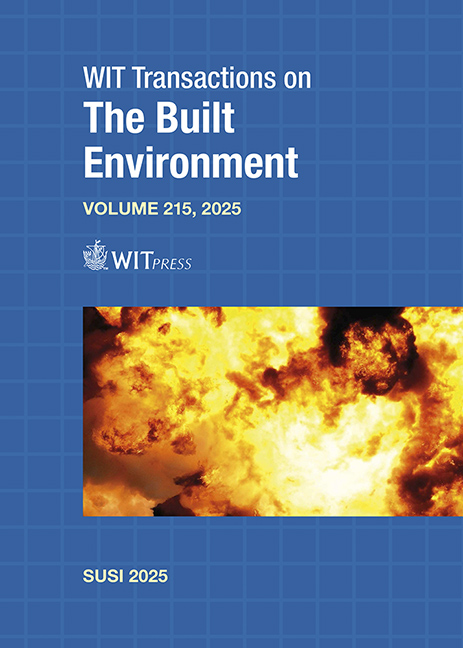EXPERIMENTAL AND NUMERICAL INVESTIGATION OF POLYMERIC GYROID TPMS STRUCTURES UNDER CRUSHING LOAD
Price
Free (open access)
Transaction
Volume
215
Pages
12
Page Range
177 - 188
Published
2025
Paper DOI
10.2495/SUSI250161
Copyright
Author(s)
MATS OVERBECK, PIETRO BALLARIN, TIM LUPLOW, SEBASTIAN HEIMBS
Abstract
Triply periodic minimal surface (TPMS) structures offer a unique set of characteristics that make them particularly attractive for aerospace applications. As open-cell structures with efficient specific strength and stiffness properties, they enable the design of lightweight and effective sandwich core materials for applications such as laminar flow control via boundary layer suction on the leading edge of an aircraft wing. In such components, bird strike often represents the critical load case for structural design, a precise understanding of the mechanical behaviour of TPMS structures is essential for their effective application in these contexts. Therefore, this study presents a comprehensive modelling methodology for gyroid structures integrating experimental and numerical methods to investigate both quasi-static and dynamic crushing behaviour. Initially, quasi-static coupon experiments are conducted on polymeric materials tailored for this application. Digital image correlation techniques are employed to analyse the stress states. Subsequently, dynamic tests are performed to assess the performance of TPMS structures under high loading rates. A finite element model is developed to simulate the mechanical response of the TPMS structures. This model is then validated against experimental data. The results demonstrate strong numerical–experimental agreement, with material parameters calibrated from coupon tests enabling an accurate representation of the stress–strain response and acceptable results were obtained for the first part of the dynamic crushing simulation of gyroid structures.
Keywords
TPMS, gyroid, compression, crushing, finite element modelling





